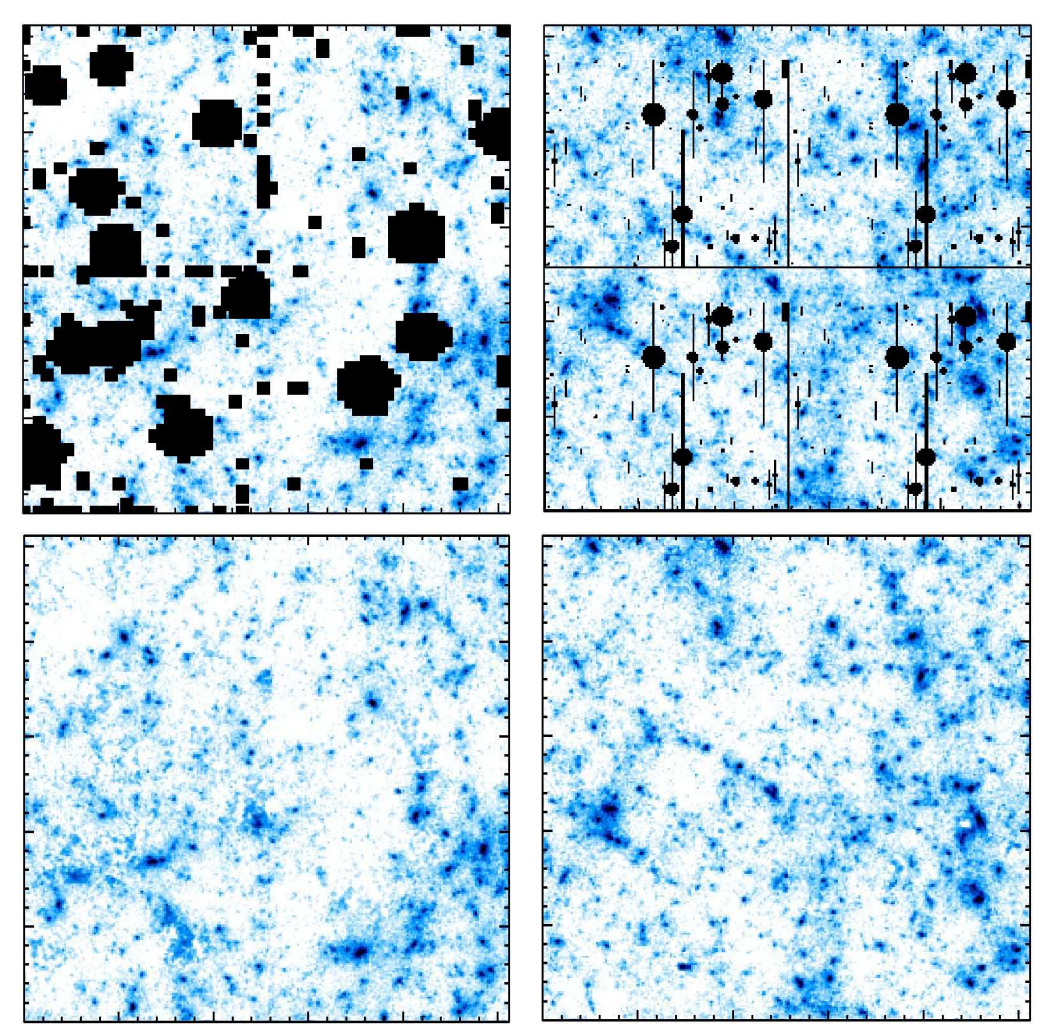Abstract
With increasingly large data sets, weak lensing measurements are able to measure cosmological parameters with ever greater precision. However this increased accuracy also places greater demands on the statistical tools used to extract the available information. To date, the majority of lensing analyses use the two point-statistics of the cosmic shear field. These can either be studied directly using the two-point correlation function, or in Fourier space, using the power spectrum. But analyzing weak lensing data inevitably involves the masking out of regions or example to remove bright stars from the field. Masking out the stars is common practice but the gaps in the data need proper handling. In this paper, we show how an inpainting technique allows us to properly fill in these gaps with only NlogN operations, leading to a new image from which we can compute straight forwardly and with a very good accuracy both the pow er spectrum and the bispectrum. We propose then a new method to compute the bispectrum with a polar FFT algorithm, which has the main advantage of avoiding any interpolation in the Fourier domain. Finally we propose a new method for dark matter mass map reconstruction from shear observations which integrates this new inpainting concept. A range of examples based on 3D N-body simulations illustrates the results.

